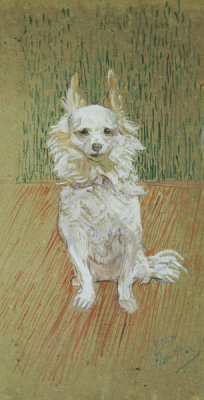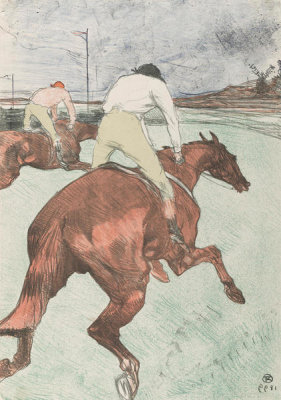Henri de Toulouse-Lautrec
Henri de Toulouse-Lautrec (French, 1864–1901) was born in 1864 to wealthy, aristocratic parents in Albi, an ancient city in southwestern France. When he was ten years old he began to suffer from a rare disease that stunted his growth. His condition was made worse by two falls in which his fragile leg bones were broken. While recuperating, young Henri entertained himself by doing watercolors and drawings of animals and his family.
After high school, Lautrec’s mother took him to Paris to study with some of the best-known painters in France. He became skilled at drawing and experimented with the techniques of Impressionism, but ultimately developed his own very personal style.
Lautrec lived and worked in Montmartre, which was then a country village on a hill near Paris but is now a neighborhood within the city. He adored dance halls and cabarets where workers, artists, and wealthy aristocrats mingled. Lautrec drew and painted this world just as he saw it from the table reserved for him nightly at the Moulin Rouge, saying, “I have tried to draw something real, not ideal.” Other entertainments also attracted Lautrec and became subjects for his art: bicycle races, skating rinks, the circus, masked balls, and the theater.
Unfortunately, Lautrec became addicted to alcohol and in 1899 suffered a mental breakdown. He recovered briefly, but then started drinking again and in 1901, at the age of thirty-six, he suffered a stroke and died.
Throughout his brief life, Lautrec was attracted to energy and individuality. He focused intensely on making pictures of dancers and singers, capturing their unique personalities by gently exaggerating their features. Like many Impressionist artists and his friend Vincent van Gogh, Lautrec was influenced by Japanese woodblock prints—their simplified shapes, decorative lines, and use of cropping. His influence on advertising and book illustration remains strong today.



